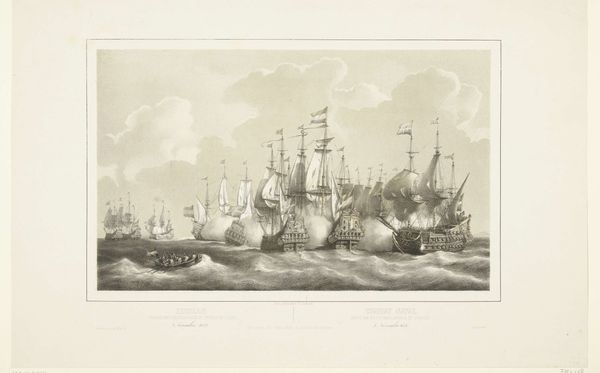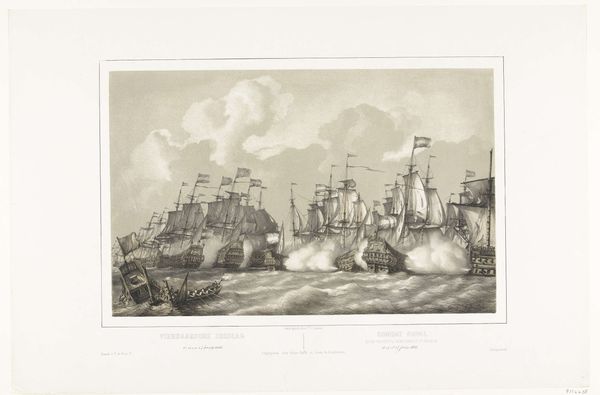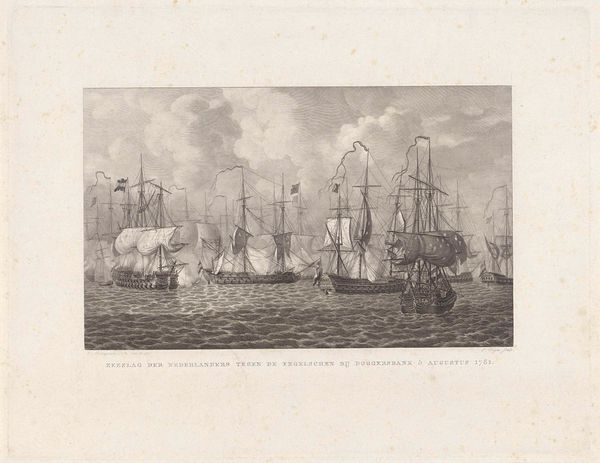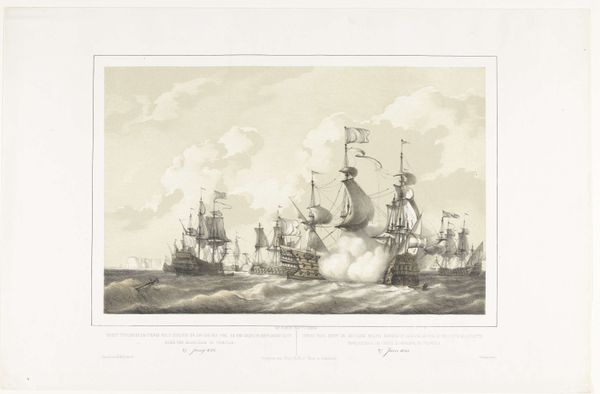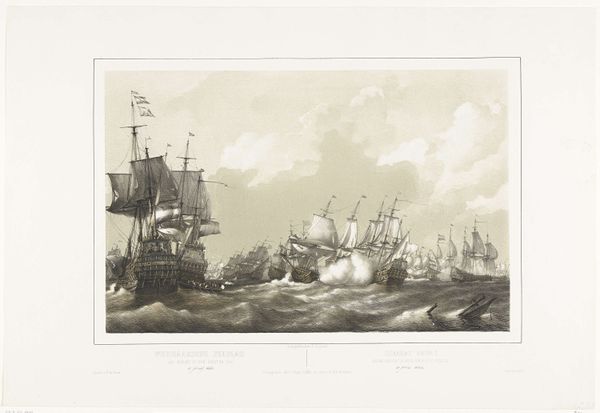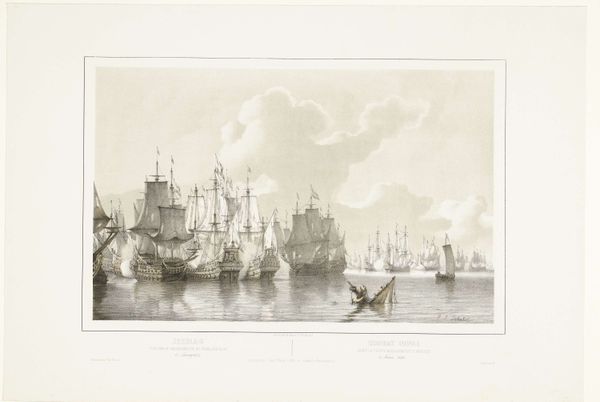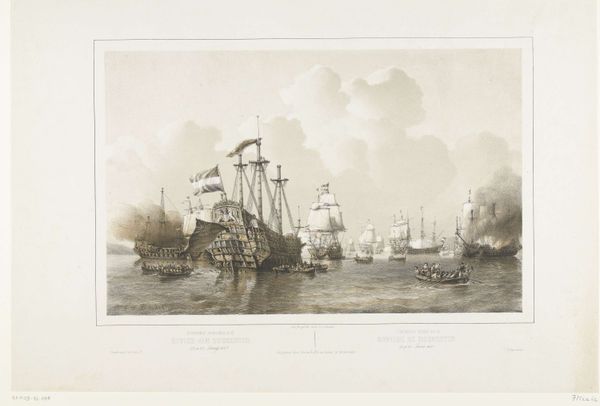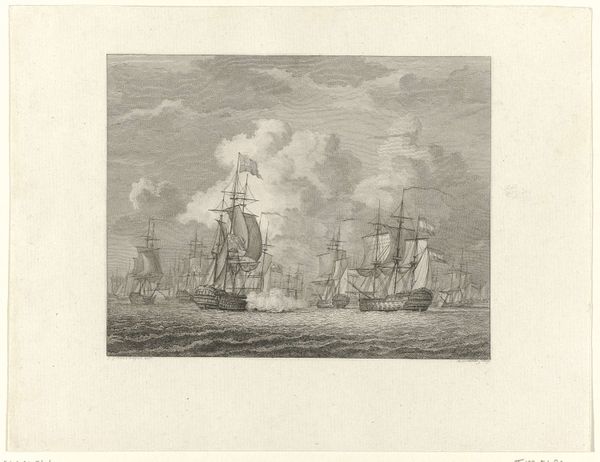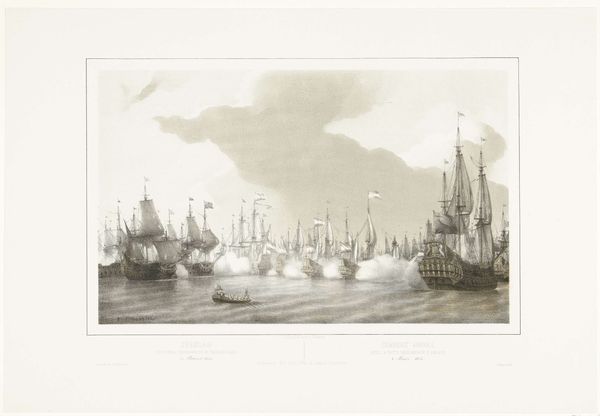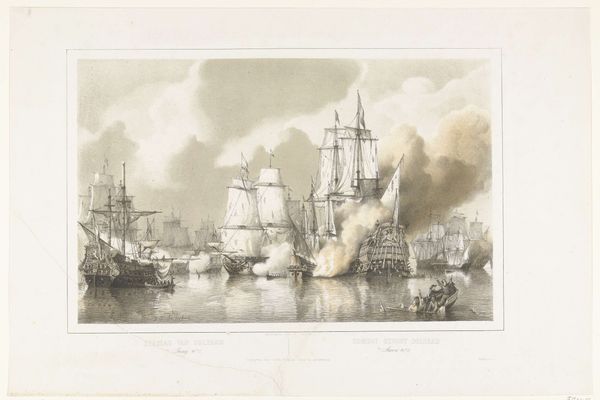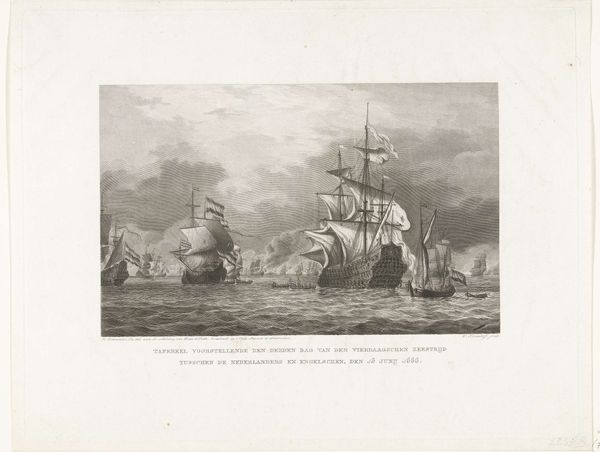
Dimensions: height 402 mm, width 528 mm
Copyright: Rijks Museum: Open Domain
Editor: So, this is “Zeeslag op Schoonevelt, 7 juni 1673,” created between 1848 and 1855 by Petrus Johannes Schotel. It's an etching and it portrays a naval battle... there's so much detail! All those ships… It’s a really striking composition. What catches your eye in this piece? Curator: The first thing that strikes me is the labor involved in creating such a detailed print. Etching requires skilled artisans to translate Schotel's vision through a physically demanding process. The consumption of materials like copper plates, acids, and paper also speaks volumes about the economics of art production in the mid-19th century. Editor: That's interesting. I was just focusing on the ships themselves. But how does the subject matter itself play into the social context? Curator: Absolutely. The depiction of the naval battle – commemorating a historical event – likely served to reinforce Dutch national pride, and we can also examine the source of these materials - how was this copper acquired and produced? Editor: So, even the celebration of history is tied to material production? Curator: Precisely. The work reinforces Dutch nationalism through its very means of creation and consumption, reflecting specific labour conditions and availability of resources at the time of its making. Considering both aspects provides a more nuanced understanding of its place in art history. Editor: I never really thought about the physical making of art in that way before, really considering materials and where they come from! Curator: Thinking materially brings history to life, showing how even artistic celebrations rely on vast networks of production. It's about labor, consumption, and the often-overlooked means by which art comes into existence.
Comments
No comments
Be the first to comment and join the conversation on the ultimate creative platform.
